 |
| Chatsworth from across the River Derwent |
In 1760 Horace Walpole wrote:
It is a glorious situation; the vale rich in corn and verdure, vast woods hang down the hills, which are green to the top, and the immense rocks only serve to dignify the prospect. The river runs before the door, and serpentises more than you can conceive in the vale. The Duke is widening it, and will make it the middle of his park.1
 |
| Chatsworth from the gardens |
Horace Walpole wrote:
The principal front of the house is beautiful, and executed with the neatness of wrought plate.1
 |
| Chatsworth and Paine's bridge from across the River Derwent |
The bridge was designed by James Paine for the 4th Duke of Devonshire (1720-1764) in the 1760s.
The Stables
 |
| The Stables, Chatsworth |
Horace Walpole wrote:
A heavy quadrangle of stables is part of the plan, is very cumbrous, and standing higher than the house, is ready to overwhelm it.1
 |
| The North Entrance Hall, Chatsworth |
This room was originally the kitchen, but the 4th Duke turned it into an entrance hall in the 1760s.
The North Sub Corridor
 |
| The North Sub Corridor, Chatsworth |
This was originally an open colonnade offering some protection from the weather to visitors as they crossed the Courtyard.
The Painted Hall
 |
| The Painted Hall, Chatsworth |
The 5th Duke (1748-1811) laid the first black and white marbled floor in 1779.
 |
| The Courtyard, Chatsworth |
When it was built by the 1st Duke (1640-1707), the Painted Hall was entered through the Courtyard.
 |
| The Painted Hall, Chatsworth, from the balcony |
The Painted Hall originally had no ground floor windows; these were added by the 6th Duke in the 1820s.
The Grotto
 |
| The Grotto, Chatsworth House |
The Grotto was at the heart of the 1st Duke's very modern plumbing system which provided both hot and cold running water.
The Chapel Corridor
 |
| The Chapel Corridor, Chatsworth |
 |
| A gigantic foot, in the Chapel Corridor, Chatsworth |
It used to be thought that the colossal foot on display in the Chapel Corridor was a fake from the 19th century, but it is now believed to be part of a genuine 1st century Greek statue.
The Oak Room
 |
The Oak Room, displaying a model of
Chatsworth House in the centre |
 |
| The Oak Room, Chatsworth |
The 6th Duke bought the oak panelling in this room at auction without knowing what he was going to do with it!
The Chapel
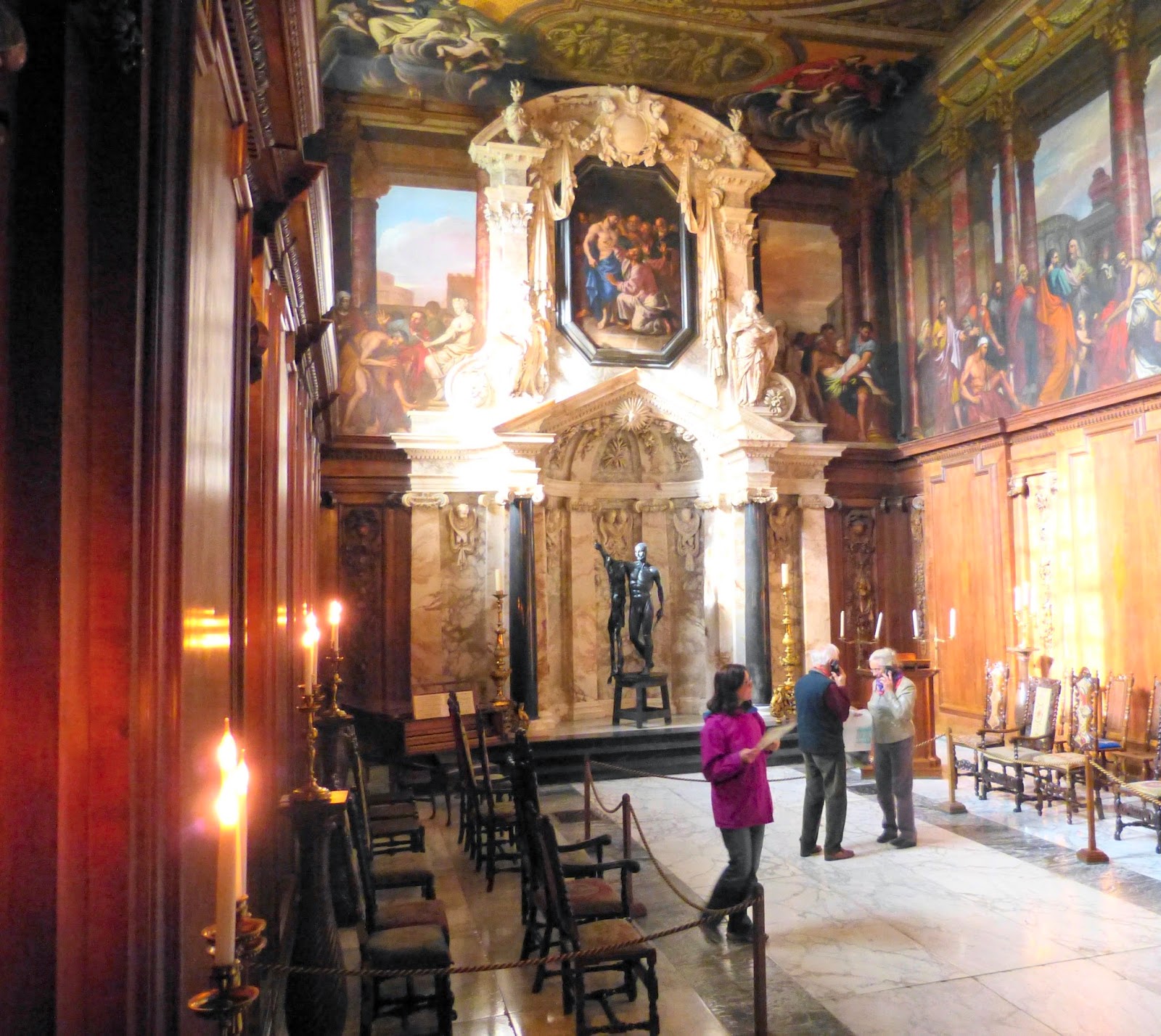 |
| The Chapel, Chatsworth |
Horace Walpole declared that: "The chapel is charming."
1
The Chapel has four Ashford black marble columns which were carved from a single block quarried on Sheldon Moor, near Ashford-in-the-Water, just a few miles away from Chatsworth.
 |
| The Chapel, Chatsworth |
An account from 1824 said:
On entering the chapel we felt the delightful fragrance of the cedar wood, of which it is almost entirely composed: it is a richly ornamented place, and carving, painting, and sculpture, have all contributed to its decoration: the ceiling, and every part of it which is not otherwise appropriated, have been embellished by the pencils of Verrio and Laguerre.2
 |
| The Great Stairs, Chatsworth |
The gilded iron banister was made by William III's ironworker, Jean Tijou.
The State Apartment: The Great Chamber
 |
| The Great Chamber, Chatsworth |
 |
Delftware vases
in the Great Chamber, Chatsworth |
The 1st Duke supported William III and Mary's accession to the throne and was rewarded by his dukedom. He built the State Apartment for their use, but alas, they never visited!
The State Apartment: The State Music Room
 |
| The State Music Room, Chatsworth |
 |
The violin door
in the State Music Room, Chatsworth |
The violin door was brought here by the 6th Duke from Devonshire House, his London home. Despite appearances, the violin is not real but painted.
State Apartment: the State Bedroom
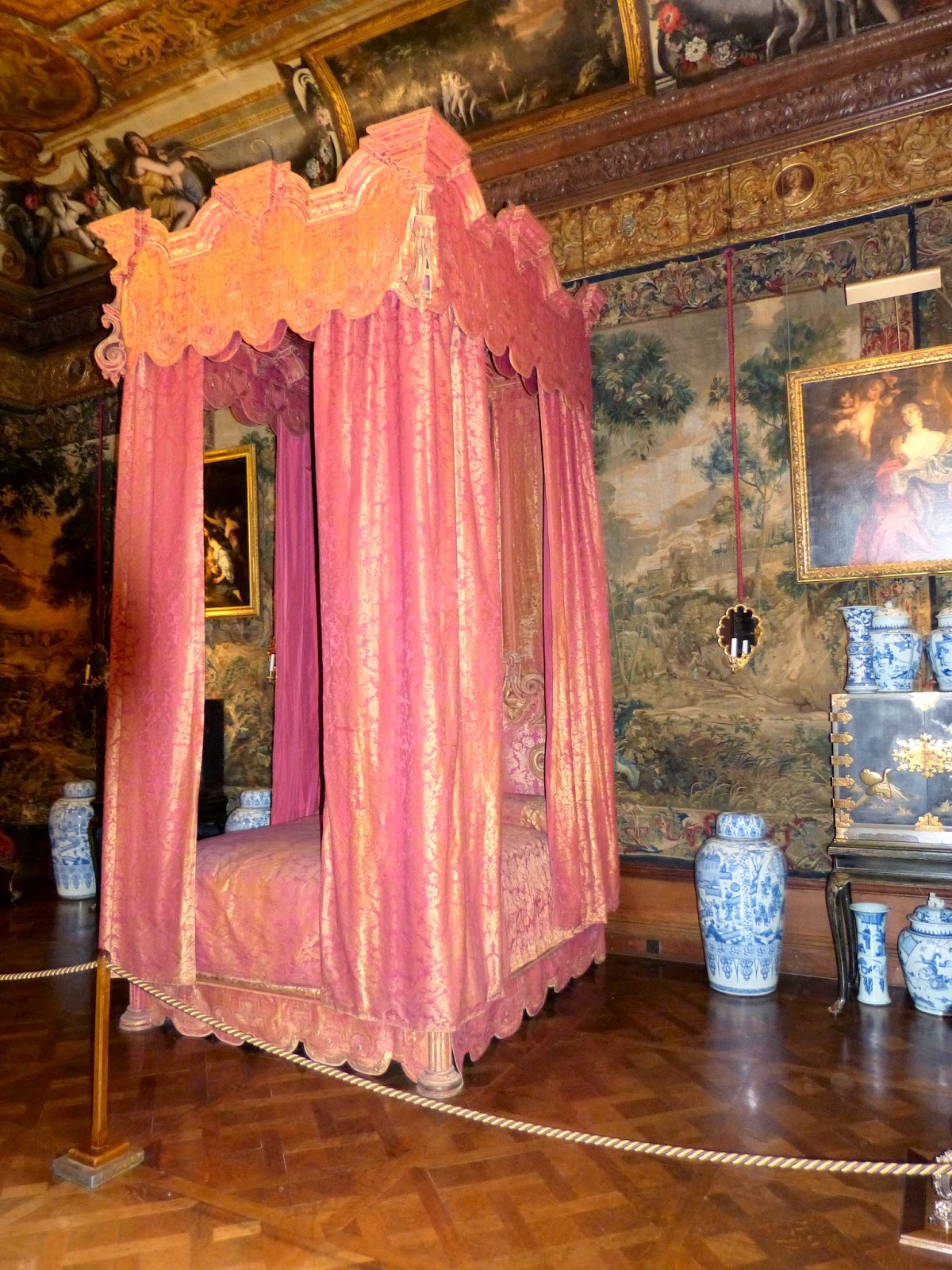 |
| The State Bedroom, Chatsworth |
 |
| Silver-gilt toilet set in State Bedroom, Chatsworth |
This French silver-gilt toilet set dates from the late 17th century and is engraved with the arms and monogram of William III and Mary.
The State Apartment: The State Closet
 |
| The State Closet, Chatsworth |
The State Closet was where the King and Queen would have conducted their most important business, should they ever have visited. The collection of porcelain displayed on the walls was designed to impress.
The Old Master Drawings Cabinet
 |
| The Old Master Drawings Cabinet, Chatsworth |
On display is a small selection from the current Duke's collection which consists of over 3000 drawings, mostly collected by the 2nd Duke (1673-1729) and his son, the 3rd Duke (1698-1755).
South Sketch Gallery
 |
| The South Sketch Gallery, Chatsworth |
 |
Portraits of the 5th Duke and his two wives:
on the right, Lady Georgiana Spencer, and on the left,
Lady Elizabeth Foster, in the South Sketch Gallery, Chatsworth |
The South Sketch Gallery is devoted to the 5th Duke and his wife,
Georgiana. The Duke's portrait is displayed between those of Georgiana and his mistress,
Lady Elizabeth Foster, who became his second wife after Georgiana's death.
 |
Part of the mineral collection on display
in the South Sketch Gallery, Chatsworth |
A visitor in 1824 complained that:
The cabinet of fossils and minerals which was collected and formed by the late Duchess of Devonshire...has been lately removed from a public to a private apartment, and it is now not shewn to strangers. That any consideration should induce the Duke of Devonshire to exclude the casual visitors to Chatsworth, from beholding this collection, may be regretted, and particularly so as it contains many choice and beautiful specimens.2
West Sketch Gallery
 |
| Lord Burlington in West Sketch Gallery, Chatsworth |
The West Sketch Gallery is devoted to the collections of the 3rd Earl of Burlington, whose daughter, Lady Charlotte Boyle, married the 4th Duke.
North Sketch Gallery
 |
| North Sketch Gallery, Chatsworth |
The ceramic panels on the right show an artistic representation of the Devonshire family based on DNA strands.
Guest bedrooms
 |
| Guest bedroom, Chatsworth |
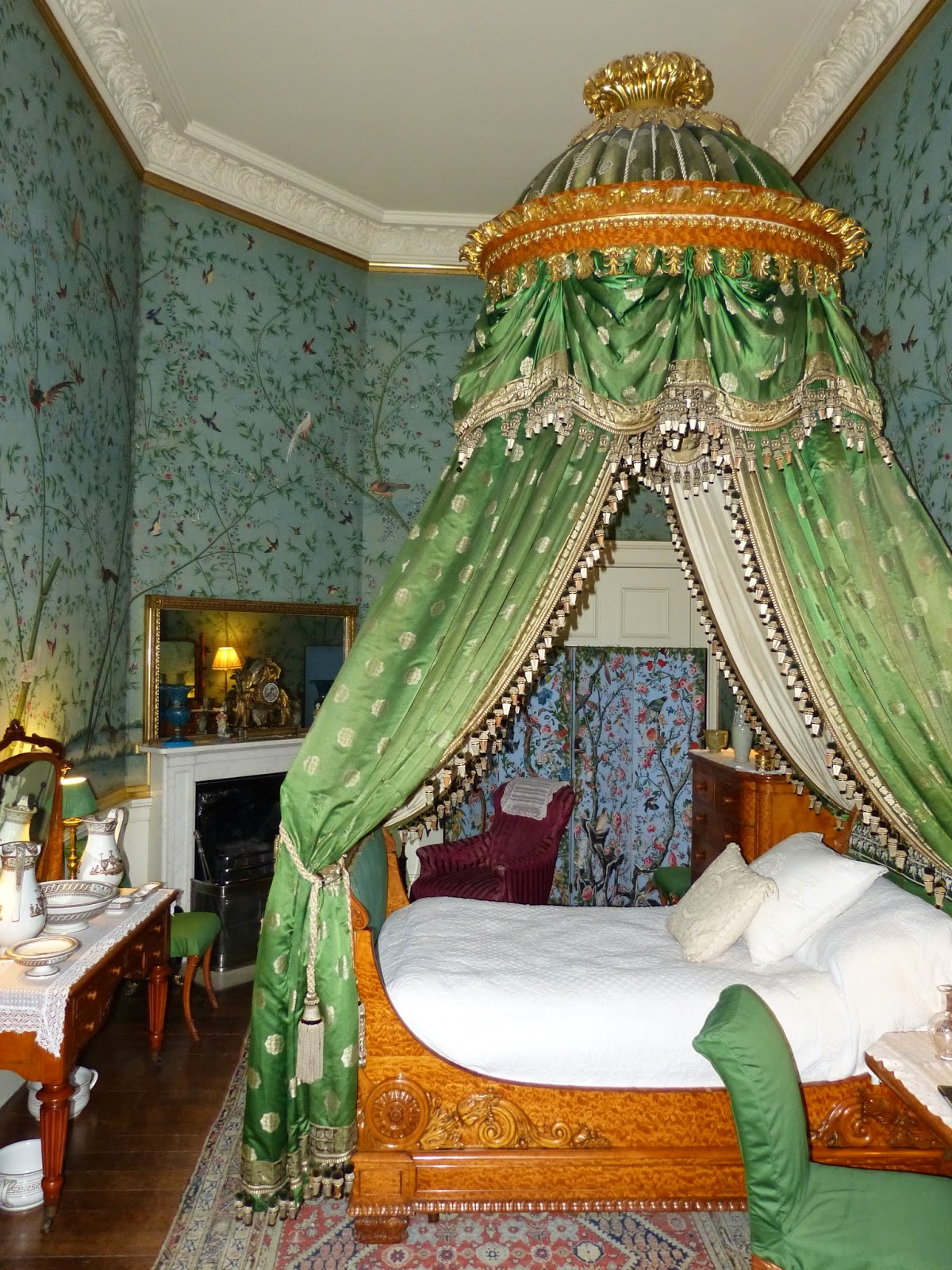 |
| Guest bedroom, Chatsworth |
 |
| Guest bedroom, Chatsworth |
These rooms were converted into bedrooms by the 6th Duke. The Chinese wallpaper is hand-painted and was very fashionable during the
Regency period.
The Great Dining Room
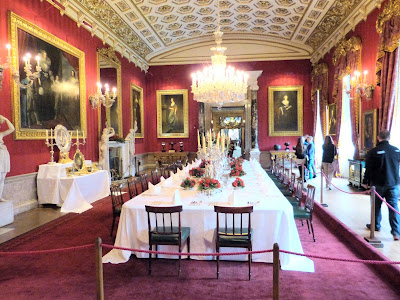 |
| The Great Dining Room Chatsworth |
The young Queen Victoria had her first adult dinner here when she was 13.
Sculpture Gallery
 |
| The Sculpture Gallery, Chatsworth |
The sculptures in the 6th Duke's collection were created by contemporary artists in the classical style. His most prized pieces were by the sculptor Antonio Canova who became his close friend.
The Cascade
 |
| The Cascade, Chatsworth |
A foreigner visiting in 1810-11 described the Cascade:
Exactly behind the house, and looking up towards the top of the hill, you see, between two lines of lofty wood, a flight of colossal stone steps, straight like Jacob's ladder, terminated at the top by a temple with a metal cupola. The gardener made a sign, and water flowed over this cupola and down the sides of the temple, and burst from the ground before it, then began to fall from step to step, sweeping off and carrying along the accumulated dirt of the winter, covering the whole in due time with a sheet of foam, and sparkling in the sun.3
Horace Walpole bemoaned the "absurdity of a cascade tumbling down marble steps, which reduces the steps to be of no use at all."1
 |
| Dragon at the top of the Cascade, Chatsworth |
Another visitor wrote in 1811:
The famous Cascade, one of those grand water works, which half a century ago, rendered Chatsworth the greatest wonder of Derbyshire, and gave it a celebrity which it has not yet lost, lies to the south-east of the house. It consists of a series or flight of steps, extending nearly two hundred yards from one end to the other, down a steep hill, crowned at the top with a Temple.
This fane, (observes Mr. Warner) should certainly be dedicated to Mercury, the god of fraud and deceit, as a piece of roguery is practiced upon the incautious stranger within its very sanctuary; from the floor of which, a multitude of little fountains suddenly spout up, whilst he is admiring the prospect through the portal, and quickly wet him to the skin.
After this practical joke, the cascade is put in motion by another screw, and certainly is grand in its kind; the water rushes in a vast quantity, and with great force and noise, from the domed roof of the temple, and from a great variety of dolphins, dragons, and a number of other figures that ornament it ; and falling into a basin in front of the building, (which also throws up several fountains) is thence discharged, and rolls down the long stages of steps before-described; and having reached the bottom, disappears by sinking into the earth.4
 |
| The Cascade, Chatsworth |
The 1st Duke’s Greenhouse
 |
| The 1st Duke's Greenhouse, Chatsworth |
The Emperor Fountain
 |
| The Emperor Fountain with Chatsworth House in the background |
The Grotto Pond
 |
| The Grotto Pond, Chatsworth |
The Maze
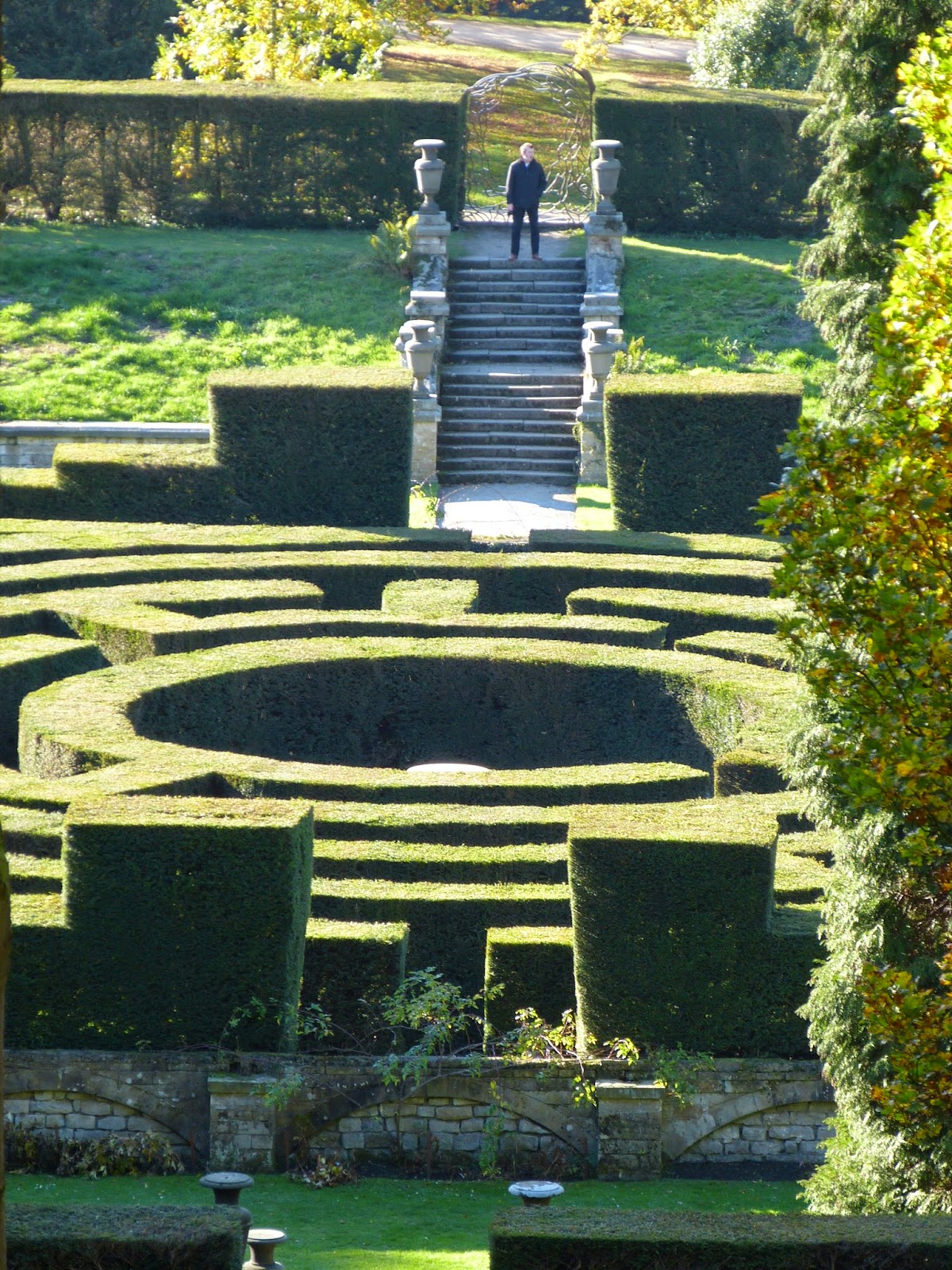 |
| The Maze, Chatsworth |
Sadly, not as old as the one at Hampton Court - this maze was planted in the 1960s!
For more about the history of Chatsworth and the Georgians who lived there, see
my Regency History guide to Chatsworth.
Rachel Knowles writes clean/Christian Regency era romance and historical non-fiction. She has been sharing her research on this blog since 2011. Rachel lives in the beautiful Georgian seaside town of Weymouth, Dorset, on the south coast of England, with her husband, Andrew.
Find out more about Rachel's books and sign up for her newsletter here.
If you have enjoyed this blog and want to encourage me and help me to keep making my research freely available, please buy me a virtual cup of coffee by clicking the button below.
Notes
1. From a letter from Horace Walpole to George Montagu dated 1 September 1760.
2. From Peak Scenery or The Derbyshire Tourist by E Rhodes (1824).
3. From Louis Simond's Journal of his tour in 1810-11.
4. From David Davies' A new historical and descriptive view of Derbyshire (1811).
Sources used include:
Chatsworth House Trust, Chatsworth, Home of the Duke and Duchess of Devonshire, guidebook (2005)
Chatsworth House Trust, Your guide to Chatsworth (2014)
Davies, David Peter, A new historical and descriptive view of Derbyshire: from the remotest period to the present time, Volume 1 (1811)
Rhodes, E, Peak Scenery or The Derbyshire Tourist (1824)
Simond, Louis, Journal of a Tour and Residence in Great Britain, during the years 1810 and 1811 vol 2 (1815)
Walpole, Horace, Letters of Horace Walpole, selected and edited by Charles Duke Yonge Vol I 1736-1764 (1890)
All photographs and video © RegencyHistory.net































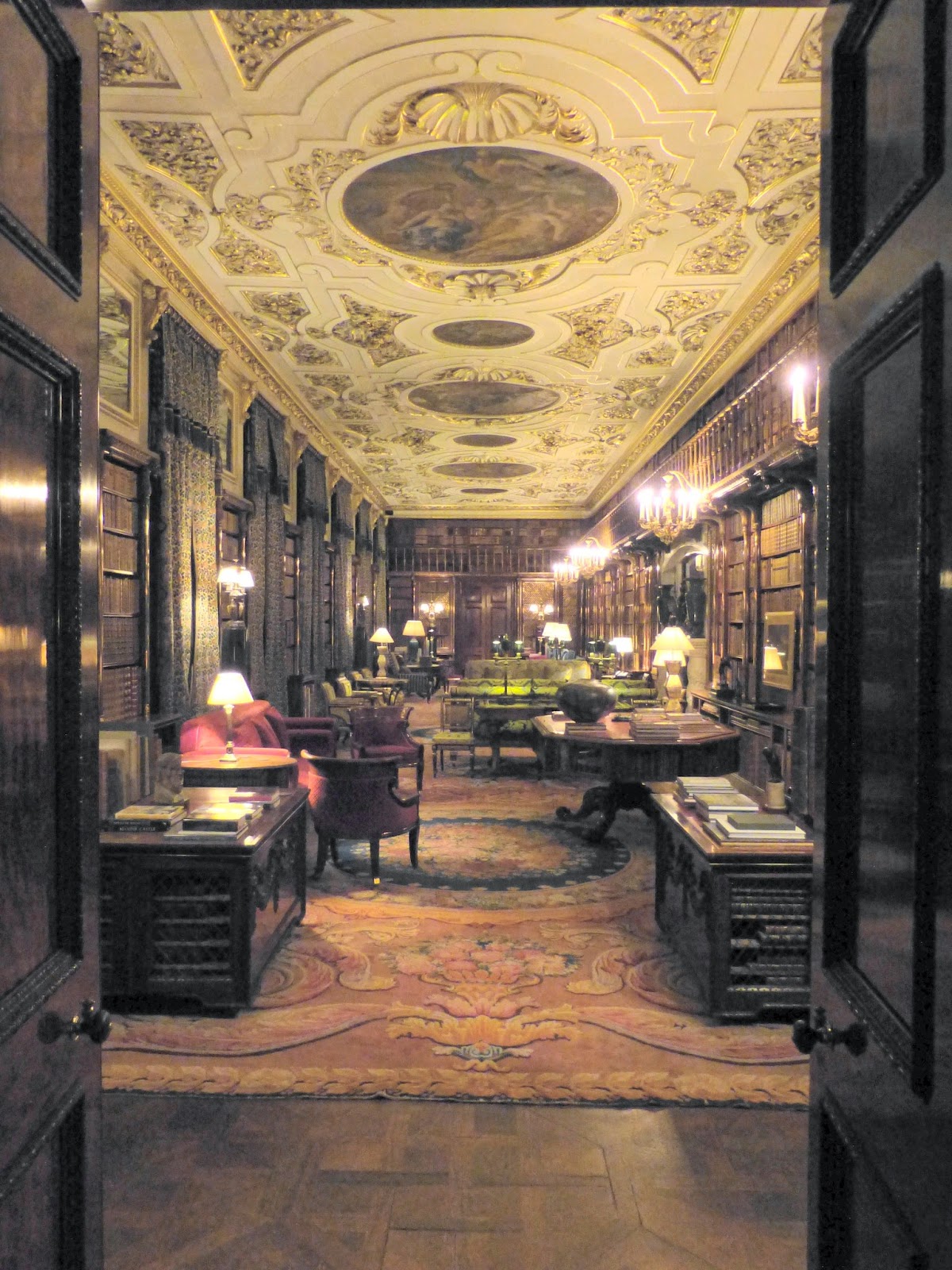

















I covet the library and ante-library... and I must have known too many small boys to be able to think what fun to pack snow in winter on the cascade and let loose enough water to freeze on top to make a massive and delightfully dangerous slide to go down on trays purloined from the kitchen.
ReplyDeleteThe library is my favourite room. So many books and such a warm feel to the room, even though you can only stand at the doorway and peer in longingly.
DeleteAs for the Cascade - I wonder whether it's ever been done?!
The cascade is very pretty. I also loved the library! Just want to sit and read!
ReplyDeleteI can quite see why the current Duke keeps the library for himself, but I am so glad he lets us peek through the door at this little paradise. :)
DeleteI must be an old leftie, though magnificent, I think it obscene I wonder and think of the serfs and slaves (the amount they were paid was not even paltry) and what did they, the owners, do to earn and warrant all of this? Supported the king? Off with their heads!
ReplyDeleteWhat revolutionary thoughts! As you say, a magnificent house inherited by the Duke of Devonshire from his father before him.
DeleteHi Rachel, thank you for the link to these wonderful photographs. The connection I wrote of yesterday is joined by a connection to the Duke of Devonshire....I think if we met I could talk to you for hours! Thanks again.
ReplyDeleteWhat an illustrious family tree - I wish I could claim such connections! I could certainly talk about Duchess of Devonshire and her time for hours and hours. :)
Delete